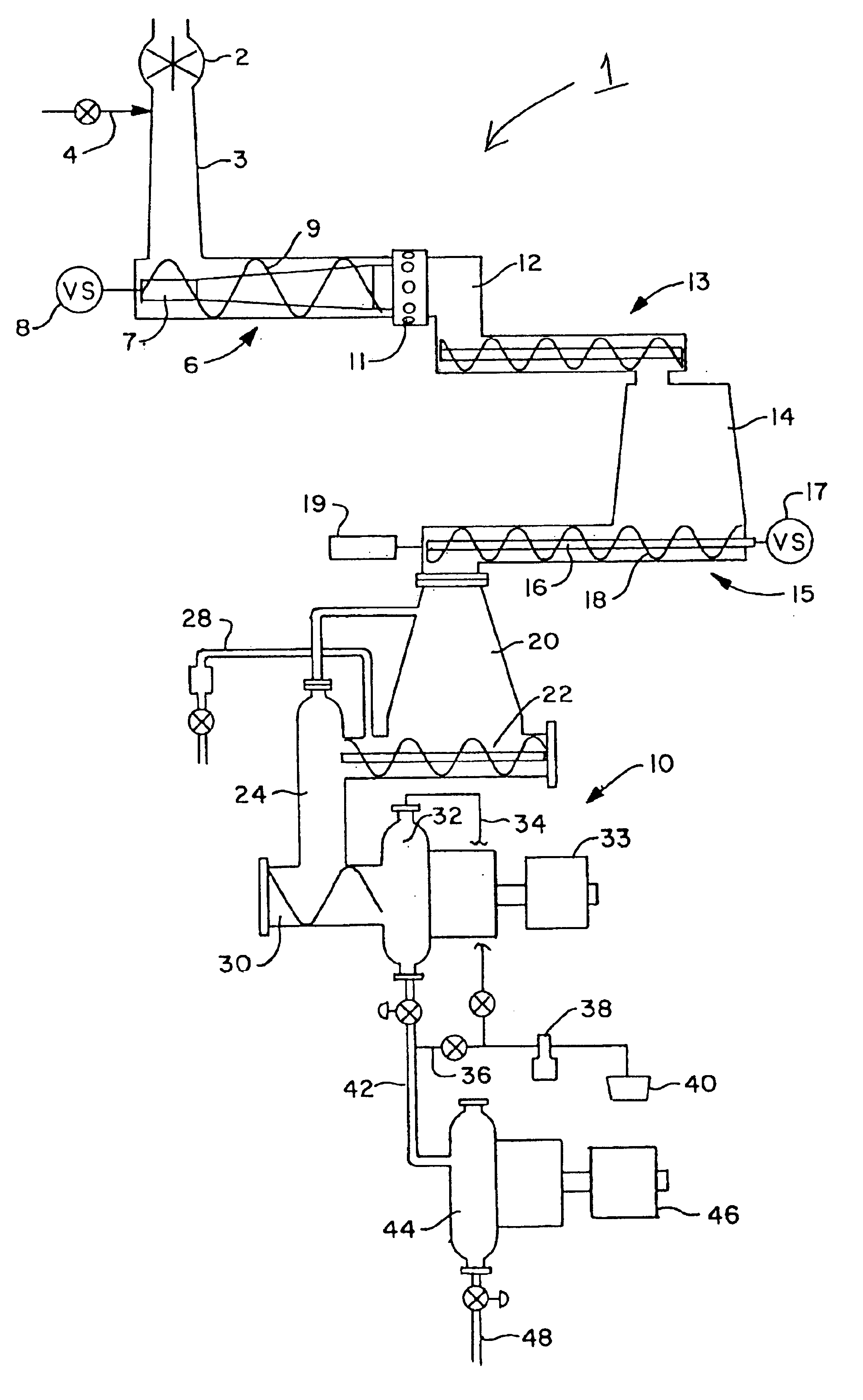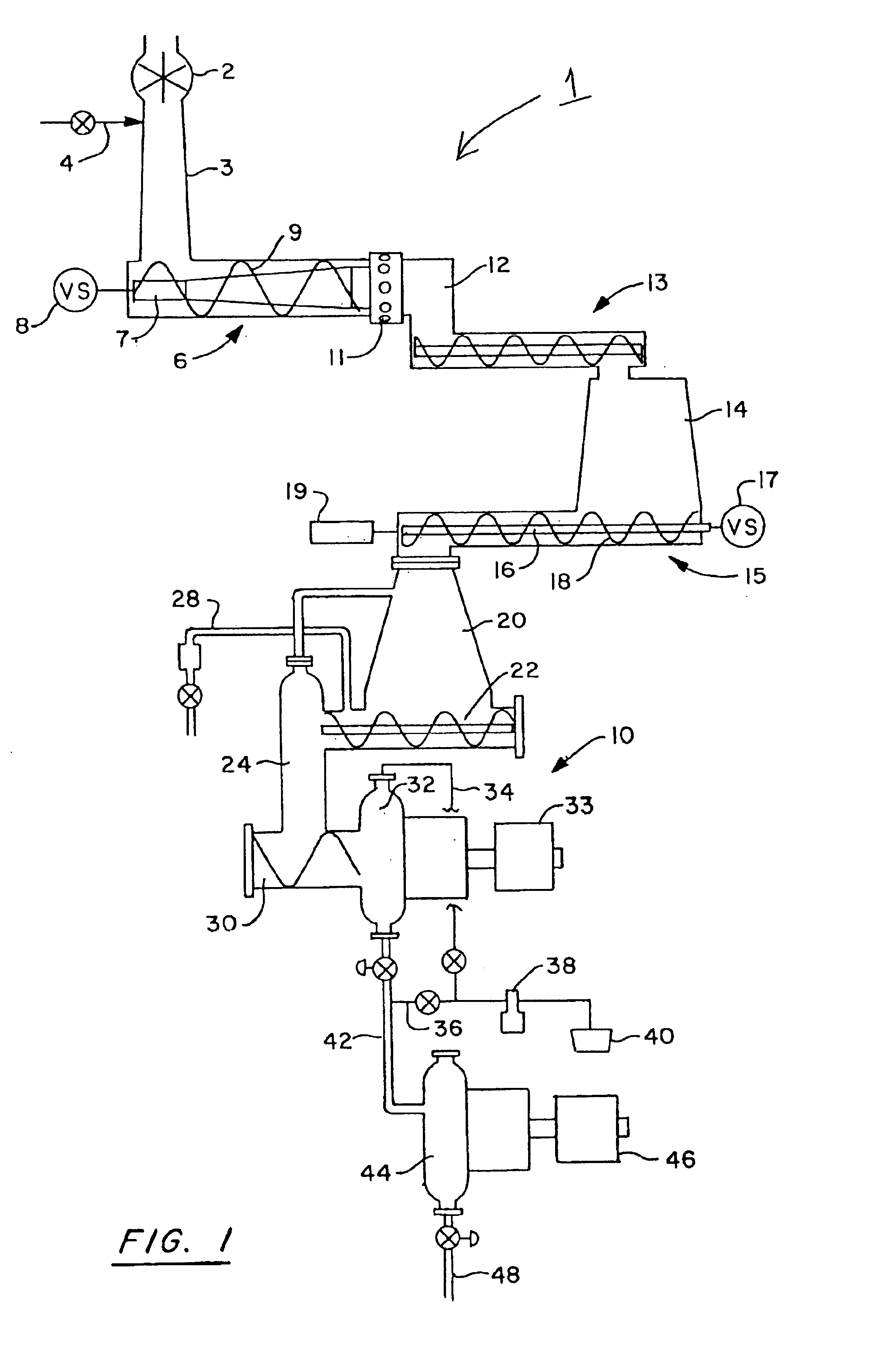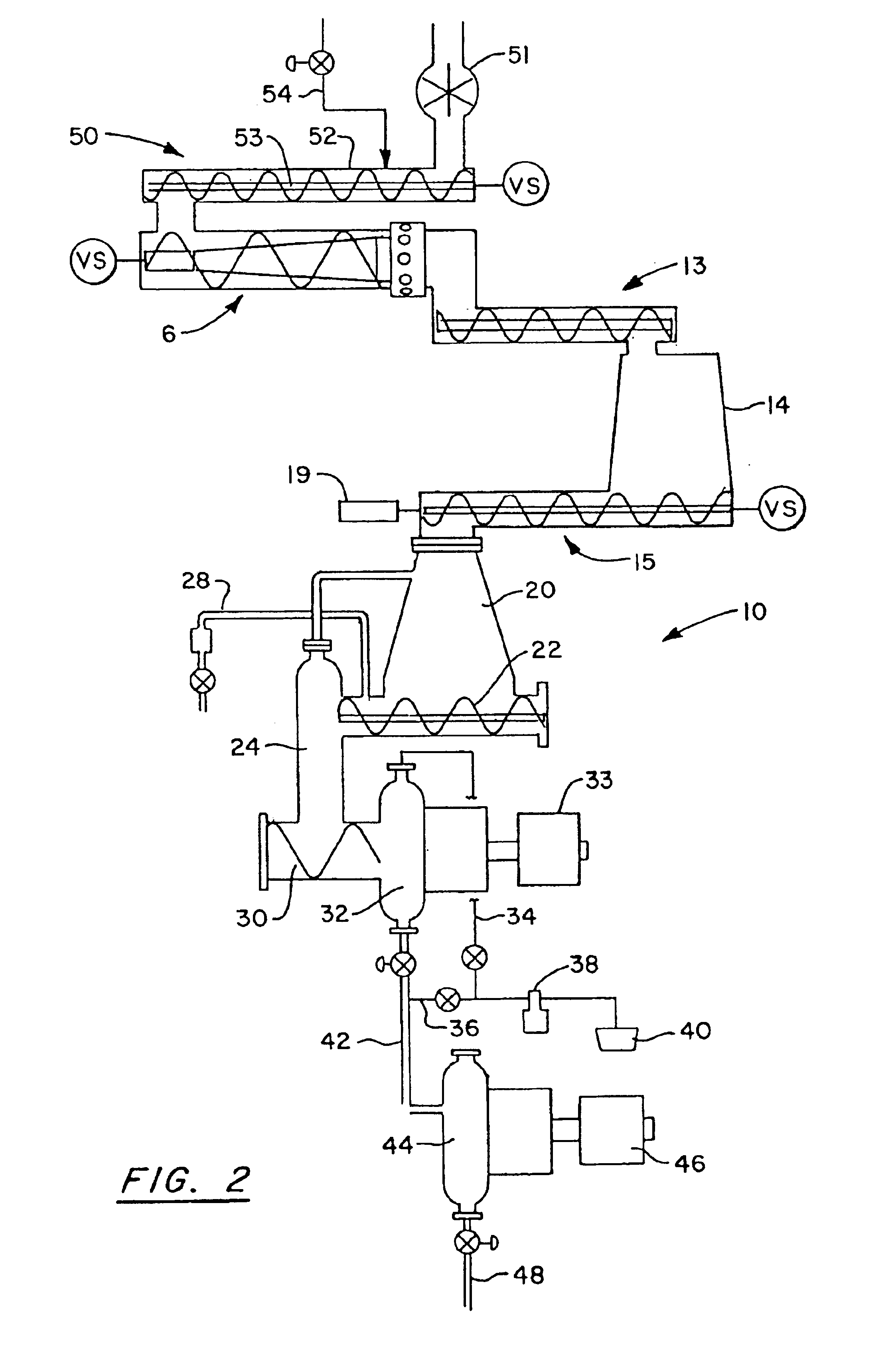Method of pretreating lignocellulose fiber-containing material in a pulp refining process
a technology of lignocellulose fiber and pulp refining process, which is applied in the field of pulp production, can solve the problems of shortening the pulp fiber, both fines and short wood fibers generated by shattering or breaking, and achieves the effects of promoting process energy savings, improving pulp strength properties and shive content, and increasing refiner intensity in the mechanical pulping process
- Summary
- Abstract
- Description
- Claims
- Application Information
AI Technical Summary
Benefits of technology
Problems solved by technology
Method used
Image
Examples
Embodiment Construction
[0024]FIG. 1 is a schematic diagram of conditioning equipment in an atmospherically decoupled arrangement with an RTS pulp refiner. In a first embodiment of the wood chip conditioning equipment 1 of the invention, wood chips are introduced to the conditioning equipment via rotary valve 2. The rotary valve allows chips to be transferred from a storage bin or other bulk feeding means which is open to the atmosphere and is otherwise at ambient conditions of pressure and temperature to the steam tube 3 where conditions of elevated pressure, temperature and optionally moisture are maintained. Other means of decoupling the conditioning equipment from the ambient conditions in which the chips are stored or transported may be used. The wood chips are resident in the steam tube for a period of time sufficient to condition the chips for subsequent compression. Typically, exposure to conditions of elevated temperature, pressure and optionally moisture for a period of 3-180 seconds is sufficien...
PUM
| Property | Measurement | Unit |
|---|---|---|
| pressure | aaaaa | aaaaa |
| pressure | aaaaa | aaaaa |
| time | aaaaa | aaaaa |
Abstract
Description
Claims
Application Information
 Login to View More
Login to View More - R&D
- Intellectual Property
- Life Sciences
- Materials
- Tech Scout
- Unparalleled Data Quality
- Higher Quality Content
- 60% Fewer Hallucinations
Browse by: Latest US Patents, China's latest patents, Technical Efficacy Thesaurus, Application Domain, Technology Topic, Popular Technical Reports.
© 2025 PatSnap. All rights reserved.Legal|Privacy policy|Modern Slavery Act Transparency Statement|Sitemap|About US| Contact US: help@patsnap.com



